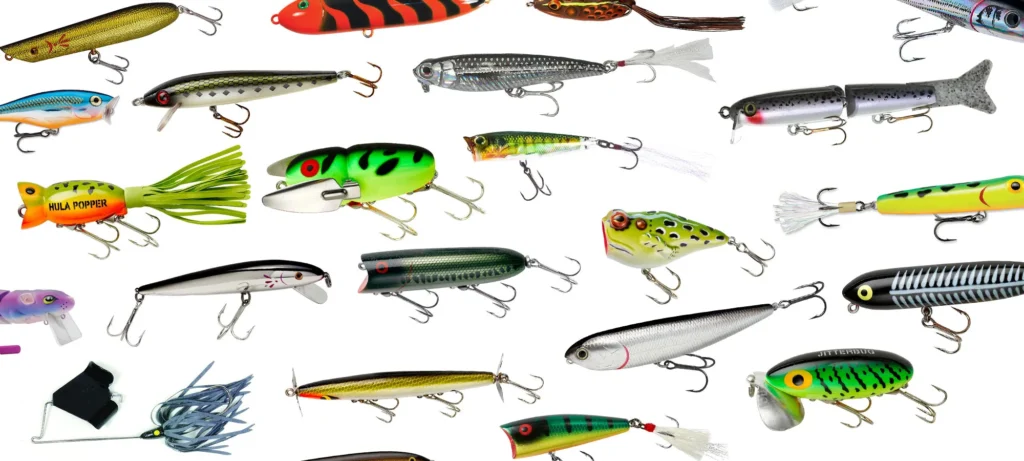Topwater fishing for bass during the summer can be exhilarating, as bass often move closer to the surface to feed. Here are five topwater options that can be effective for summer bass fishing:
- Popper:
- Description: Poppers have a concave or cupped face, and when you twitch your rod, they create a splashing or popping sound on the water’s surface.
- Technique: Cast the popper near cover or over submerged structures and use a twitch-and-pause retrieve. The noise and action can trigger aggressive strikes from bass.
- Buzzbait:
- Description: Buzzbaits have a propeller or blade that spins rapidly, creating a buzzing sound and surface disturbance.
- Technique: Cast the buzzbait parallel to the shoreline, especially near vegetation or cover. Retrieve it at a steady pace, and the commotion on the surface can attract bass.
- Walking Bait (Spook or Zara Spook):
- Description: Walking baits, like the famous Zara Spook, have a slender profile and are designed to zigzag or “walk” across the water’s surface.
- Technique: Use a rhythmic side-to-side twitching motion with your rod to make the walking bait dart back and forth. This imitates a wounded or struggling baitfish.
- Frog:
- Description: Hollow-bodied frogs are designed to replicate a frog gliding across the water’s surface. They often have weedless designs to navigate through vegetation.
- Technique: Cast the frog into lily pads, grass mats, or other surface cover. Retrieve it with a steady, hopping motion, pausing occasionally to allow bass to strike.
- Whopper Plopper:
- Description: The Whopper Plopper is a topwater lure with a rotating tail that creates a unique plopping sound on the surface.
- Technique: Cast the Whopper Plopper near structures or over open water, and retrieve it at a consistent pace. The tail’s sound and splash can draw attention from bass in the vicinity.
When using topwater lures, it’s essential to vary your retrieve speed and cadence to figure out what the bass are responding to on a given day. Additionally, consider the local conditions, such as the presence of cover or vegetation, and adjust your lure choice accordingly.

